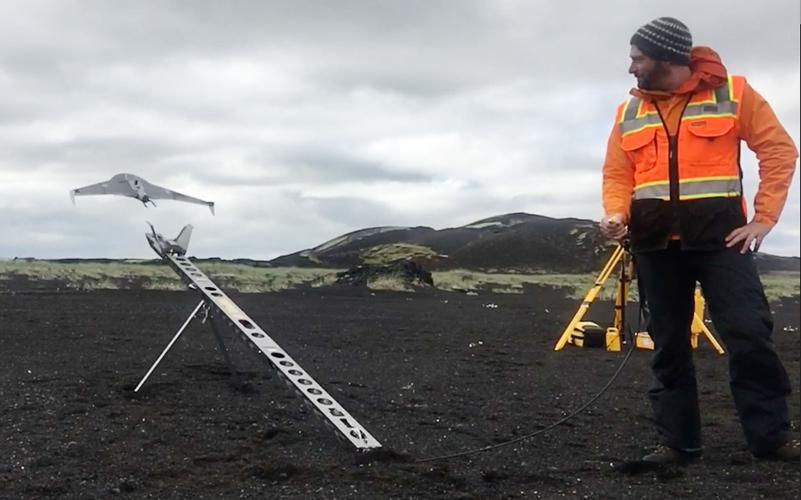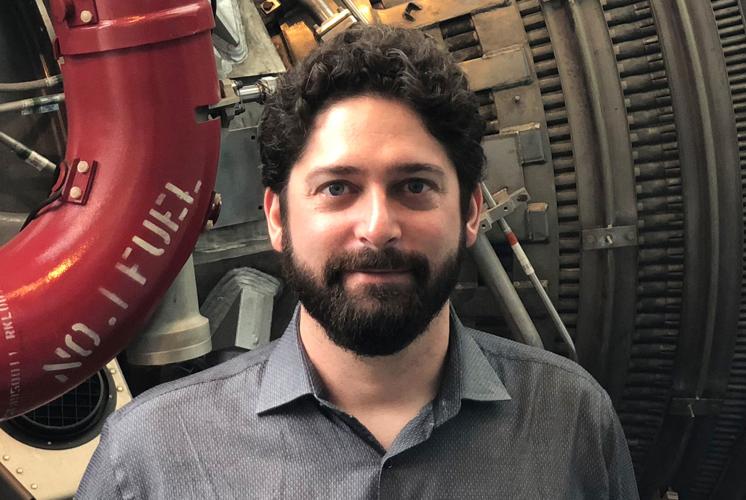Chris Hamilton fell in love with volcanoes while he was an earth science undergraduate on a yearlong exchange trip to Iceland.
Now, as a planetary volcanologist at the University of Arizona’s Lunar and Planetary Laboratory, he looks at volcanoes throughout the solar system.
“When I traveled to Iceland, I saw an active volcanic landscape for the first time and it was otherworldly,” Hamilton said. “Volcanoes and glaciers are extraordinary — not just from a scientific perspective, but also in how they make you feel. They are awe-inspiring and captured my imagination.”
By studying volcanoes on Earth, Hamilton can glean valuable insight to the geologic history of planets and could even provide hints to how life develops, as magma-water interactions can create conditions that support microbial life.
“Earth can be a window into the geological history and origin of life on other worlds, provided we know where to look and what to look for,” Hamilton said.
Hamilton focuses on water-magma interactions, using more traditional geological techniques, but also creative, cutting-edge methods like drones. He also uses satellite data, numerical models and computer models.
“In an era when most extraterrestrial exploration is undertaken with telescopic and robotic systems, I think that there is still a great deal to be learned about the workings of other planets by studying our own world,” Hamilton said.
Recently, he has been recognized with several early-career awards. He was listed on Science News’ 2018 SN 10: Scientists to Watch list, which recognizes early- and mid-career scientists, age 40 and under, who stand out to mentors and peers as people who will make a difference, and received the Geological Society of America’s Early Career Award from the Mineralogy, Geochemistry, Petrology, and Volcanology Division.
Hamilton has been with the UA’s Lunar and Planetary Laboratory since 2014 and has already made an impact, said Tim Swindle, the department head.
“It’s clear he’s going to be one of the leaders in the field. He’s that kind of person,” Swindle said. “He works hard, he comes up with clever ideas, finds ways to link different kinds of projects together and different kinds of techniques together, everything from flying kites and drones over volcanoes in Hawaii to studying Mars. I love that.”
Currently, Hamilton is working on two NASA Discovery mission concepts: The Io Volcano Observer, which would travel to Jupiter’s moon Io to study processes of active volcanism and tidal heating, and Moon Diver, which would land a tethered rover on the moon and then go underground, into a lava tube to investigate the cave structure.
“People are often surprised to learn that other planets and moons have volcanoes,” Hamilton said “Mars also has numerous volcanoes, including Olympus Mons, the tallest mountain in the solar system, about the same size as the State of Arizona.”
While learning more about other planets and developing the technology to reach them are goals, Hamilton said it’s important not to lose sight of the planet we have now.
“Without stabilizing human effects on the terrestrial and marine ecosystems, as well as the Earth’s overall climate, we will continue to lose this planet’s most valuable resource — biodiversity,” Hamilton said. “This is not just vital for improving the quality of life on Earth, but in the future, Earth’s ecological heritage will be the most valuable resource that we can bring into space.”
Reaching out to the next generation of explorers is also on Hamilton’s list. One way he plans to do that is through writing science fiction, something he said is not as far away from science as people may think.
“Ultimately, advanced science becomes a form of art and I believe that creative writing, based in scientific experience, will be among my most important contributions to society,” Hamilton said.
Beyond the literary realm, Hamilton is also inspiring new explorers in his lab as, according to Swindle, he’s well-liked by students for a number of reasons.
“He treats his students well, so they like working for him,” Swindle said. “He has lots of good ideas, so that helps them come up with ideas and … he’s willing to try new things, so you start working for him and you get the chance to try out something on the cutting edge.”
Amanda Stadermann, one of Hamilton’s graduate assistants at the lunar lab, said Hamilton is an amazing mentor.
“I admire him, I want to have his mentoring skills someday because I think I’m learning from the best,” Stadermann said.
Stadermann said Hamilton works hard to make sure his students understand the projects they’re working on. He has a way of explaining that’s never condescending, according to Stadermann, even when the student is wrong. She said it’s clear how much Hamilton cares.
“He’s such a vocal advocate for people that are minorities in science,” Stadermann said. “He’s always so well-intentioned and doesn’t have any malice in his heart, he genuinely wants everyone to succeed, and everyone to get more papers, and everyone to get more funding and everyone to do amazing science.”
While it may seem like the science fiction he plans to write, Hamilton said he eventually wants to apply his knowledge of resource distribution in the solar system and energy-efficient orbits between planetary systems to develop a blueprint for future colonization and commerce on an inter-planetary level.
This can also take cues from the Earth.
“Great cities do not simply develop close to natural resources; they develop at the intersections between major trade routes. With that in mind, one could have predicted the locations of great cities on Earth like Istanbul by considering its privileged position on the Bosporus, a nexus of trade routes,” Hamilton said. “It should be equally possible to identify the Istanbuls that will be founded within the coming millennia when humans truly enter the spacefaring age.”
It’s precisely those big ideas that helped distinguish Hamilton, Swindle said, which is why he’s been recognized with so many early-career awards.
“He produces scientific results that people notice, he puts together projects and efforts that people notice, everything from putting together special sessions at meetings to his effort in Iceland,” Swindle said. “He’s the kind of person who already, people are looking to as a leader.”





